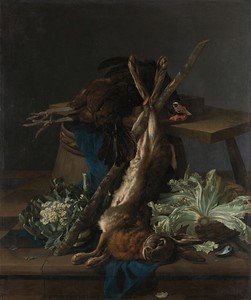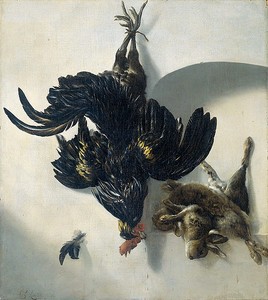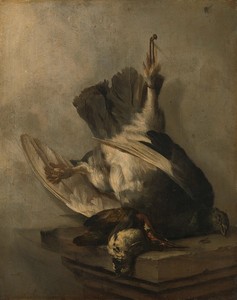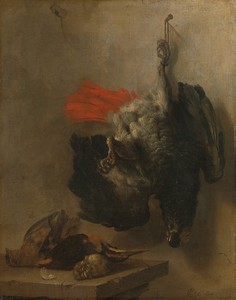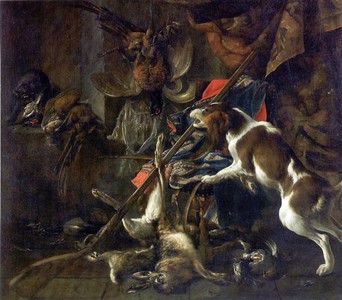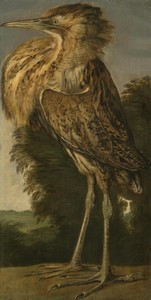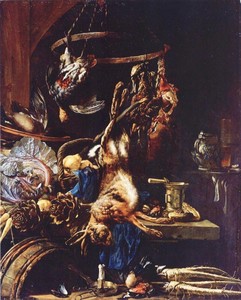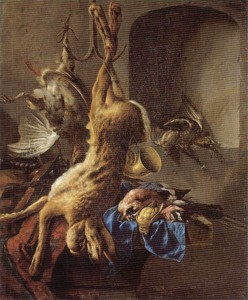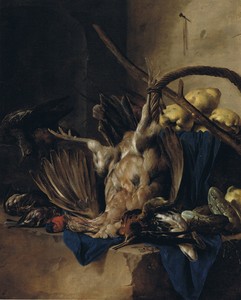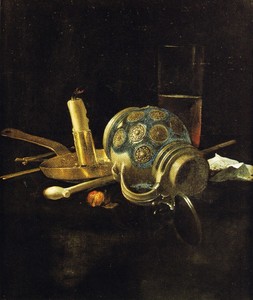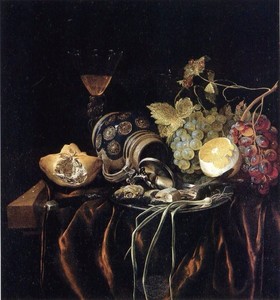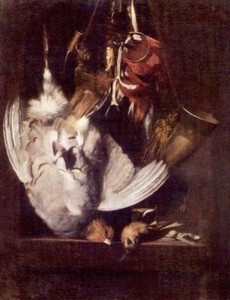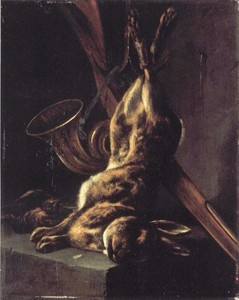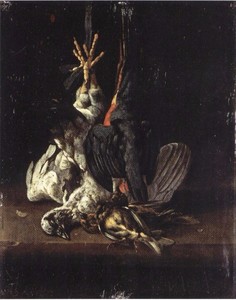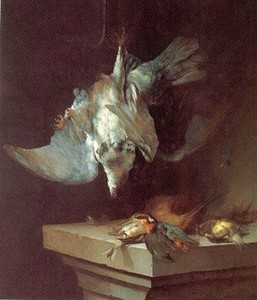86.000 €
A hunting still life with a rooster, a hare and a finch
Oil on canvas : 79,6 X 93,8 cm
Unsigned
Frame : 97,7 X 112,2 cm
I would like to thank Dr. Fred Meijer from the RKD, The Hague, who has confirmed the attribution. He dates our painting circa 1660.
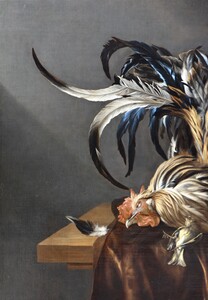
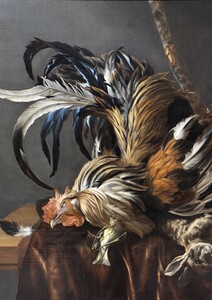
In short
Lelienbergh was one of the great Dutch animal painters. He is documented in The Hague between 1646 and 1666, and in Zeeland from 1666 onwards. Our painting dates circa 1660.
About Cornelis Lelienbergh
Dutch painter.
Sometimes called Cornelis van Lelienbergh.
Specialist of game and bird still lifes; our painter also painted fruit and food still lifes and a few barn interiors. He is also said to have painted flower still lifes, but none of these are known today.
Born between 1620 and 1630, birthplace and teacher unknown. His earlier works remind of Jan Baptist Weenix, the later ones of the Flemish painters Jan Fyt and Pieter Boel.
Lelienbergh is documented in The Hague between 1646 and 1666, and in Zeeland from 1666 onwards.
In 1646 he joined the Painters Guild of Saint Luke in The Hague, paying the admission fee of 18 Guilders due for a member who was not born in The Hague.
He married in The Hague in 1649, his children were all baptised here (some in the Roman Catholic church, some in the Protestant Nieuwe Kerk).
In 1656 he was a co-founder of Confrerie Pictura in The Hague, which was an alternative for the Painters’ Guild.
Cornelis Lelienbergh remained in The Hague until 1666, when he obtained a civil service post as clerk in Zeeland, in the fortress of Moerspuy (near the present Belgian border). He owned his proper house here, which shows he was well off.
Dated works known between 1650 and 1680, although dated works from after 1666 are rare. As to his undated works, these also correspond stylistically to his Hague years prior to 1666.
The university of Stockholm holds his last known painting, an anecdotic still life of good quality, signed and dated 1680; therefore he must have died in or after 1680.
About our painting
Dead game and other animals were a common motif in 17th century Dutch and Flemish painting.
The traditional allegorical meaning of such a motifs is of course a reminder of the transitory nature of earthly existence, the brevity of life, the "vanity of vanities". Yet for our artist the most important aspect is to capture the variety of colours in the birds' feathers and in the hare’s fur and to pick out all the nuances of shade and tone. He used therefore cold, cool colours, with a few strong accents, and dramatic light effects.
Why should you buy this painting?
Because this is an absolutely stunning painting: the tail of the rooster reminds of Japanese calligraphic painting and every single hair of the hare contributes to the creation of a three-dimensional body. In short: still life painting at its very best.
Comparative paintings
Click photos for more details

